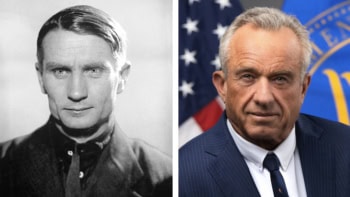Two of the acronyms most frequently used by physicists in the UK celebrate their fourth birthdays this month. Between them the EPSRC and PPARC fund most of the research projects performed by physicists in UK universities. The remit of the Particle Physics and Astronomy Research Council (PPARC) is self-explanatory, while the Engineering and Physical Sciences Research Council (EPSRC) supports most other areas of physics, with a few exceptions such as biophysics. The two councils have approached their tasks in very different ways and with varying degrees of success. In this month’s Physics World Ken Pounds, the outgoing chief executive of PPARC, describes how crisis management often had to take priority over scientific leadership. Sometimes this was caused by circumstances outside of his control, mainly fluctuations in subscriptions to international bodies such as CERN and the European Space Agency. A related problem was the fact that the council’s domestic budget – effectively the money it has to support experiments that use facilities it has already paid for – was falling in real terms, while the scientific opportunities open to particle physicists and astronomers were multiplying. This continues to be a problem.
After a sometimes torrid spell in office – the council supports the work of two vigorous, well organized and vocal communities – Pounds and PPARC have recently been able to devote more time to scientific leadership. A major challenge for Pound’s successor, Ian Halliday, will be to convince the government that the science in PPARC’s “road map” is just too exciting and too important not to be funded properly. Halliday has also identified two other priorities: career structure for postgrads and postdocs, and the need to take more risks in research.
What chance success? The UK’s new science minister, John Battle, has already visited CERN and the UK’s dark matter experiment, and seems to have been impressed by both. It is to be hoped that this, coupled with Battle’s enthusiasm for science that appeals to the public imagination – and PPARC’s certainly does – will bode well for particle physics and astronomy in the UK. The EPSRC is a very different beast. It currently funds researchers working on everything from the theory of Bose-Einstein condensates to engineering for manufacturing. In addition it is also expected to fund research that will lead to the creation of wealth, and to have closer links with industry than PPARC. Physicists still receive more from the council than their colleagues in other departments, but the gap is narrowing. And although many physicists are quick to criticize the council in private, they are reluctant to do so on the record.
There are contradictions at the council as well. Policy seems largely to be dictated by two panels – buoyantly called TOP and UP – but these panels seem to operate like black boxes, a process that is sure to intrigue and infuriate curious physicists. Moreover, it is obvious that these panels have a low opinion of the council’s physics programme. Yet when the EPSRC set up evaluation panels to look at the quality of the research that it funds, large parts of the physics programme were found to be world leading. There is no doubt, however, that the council wants to see the programme move in new directions, and physicists would be foolish to ignore strong hints about the need for more innovative ideas and better links with industry. Whether the best way to achieve this is the way suggested by the council’s chief executive – a new direction drawn up by one or two leading physicists – is less clear. Such an approach might serve a university department rethinking its priorities but is ill-suited to a community of hundreds of researchers across more than 40 universities.
The EPSRC also takes a dim view of the breadth of the current physics programme. But surely this breadth is a good thing. By all means cut those areas where there is only scope or hope of incremental progress, but given that the programme does not include particle physics, astronomy and many areas linked to electronics and optics, there is little need to focus further. Indeed, the message from both sides – the council and the researchers – seems to be that the other side could do better.



